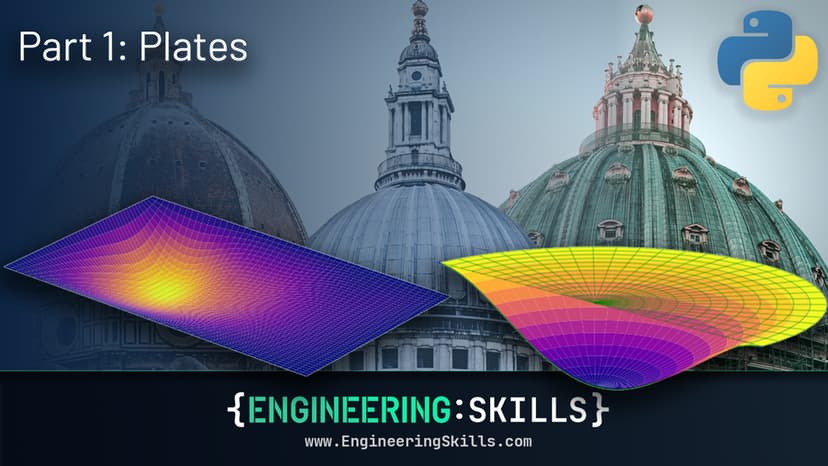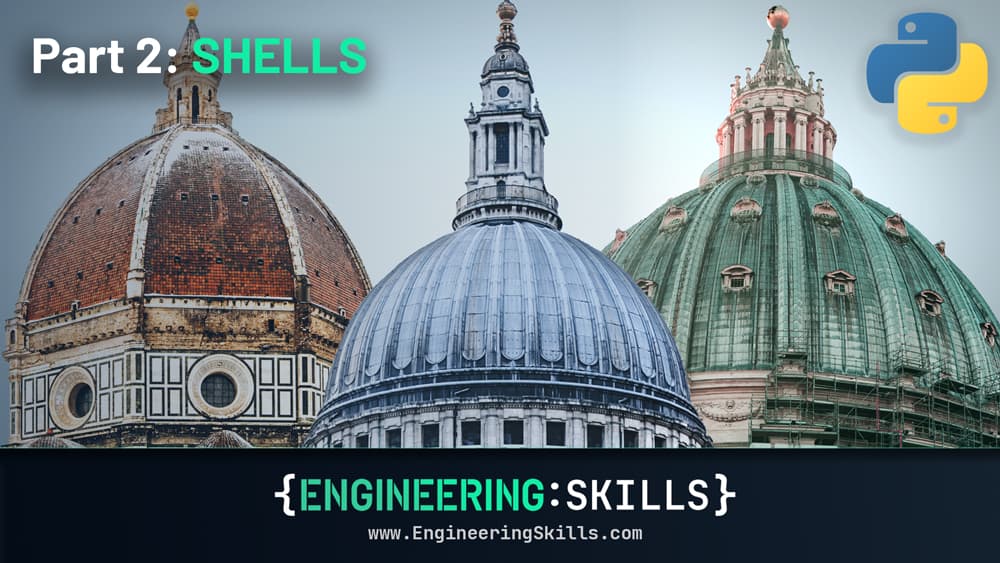
Analytical Modelling of Plate and Shell Structures: Part 2 - Shells
Unlocking the Fundamentals of Shell Behaviour with Analytical Modelling and Membrane Theory
- You will understand how to describe and characterise shell structures based on their principal curvatures.
- You will understand the membrane theory of shells, one of the most fundamental models of shell behaviour.
- You will have completed a wide range of analysis case studies that help to contextualise the membrane theory of shells, leaving you in a position to deploy it independently in your own work.
- You will further enhance your ability to use Python and the SymPy library to work programmatically with symbolic math and bring your analyses to life.
This is the second course in a two-part series focused on the analytical modelling of plate and shell structures. This time, we turn our attention to modelling shells and, specifically, membrane behaviour - the fundamental load-resisting mechanism for shell structure.
Just like in part one, you can think of this course as having 2 complementary aims:
- To help you develop a deep understanding of membrane behaviour and workflows for modelling it from first principles.
- To give you some tools and techniques for tackling math-heavy analyses without getting stuck in the mathematical weeds! For this, we’ll again use SymPy - the Python Scientific Computing Library.
Prior programming knowledge is not required to take this course - we’ll basically be using Python as a calculator on steroids! You’ll pick up the Python you need as we go.
Membrane behaviour
This mechanical behaviour allows shells to span incredible distances with remarkably thin section sizes. Structural efficiency is one of the defining characteristics of shell structures.
Engineers have exploited this efficiency for centuries to deliver some of our most iconic structures, from the Roman Pantheon to the grand domed roofs that emerged from the 14th to 18th centuries.

The elaborate shell structures we see today, when designed to optimise structural efficiency, still exploit this load-carrying mechanism.
This efficiency is borne out of the fact that the cross-section experiences pure tension or compression and, ideally, no bending. This uniform stress distribution means every fibre of the section is equally utilised, as opposed to bending, where only the extreme fibres reach their strength capacity.
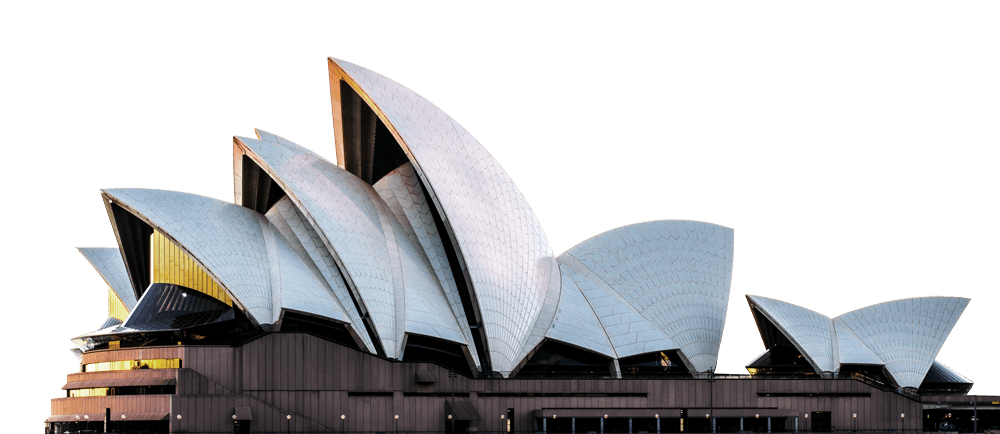
In modern engineering, much of the heavy-lifting of analysis is done by numerical modelling. This speed and efficiency comes with trade-offs, one being the ability to easily generate wildly inaccurate results with poorly or misunderstood inputs.
It could be argued that an understanding of the fundamentals of membrane behaviour is more valuable to the engineer now than ever before.
In this course we’ll explore a model of membrane behaviour that allows us to predict stress distributions and displacements across a range of different shell geometries. In doing so, you develop the skills needed to independently tackle new geometries and loading arrangements.
If you’ve ever tried to unpack shell behaviour before, you’ll know that it can be a tough road, with some very intimidating mathematics along the way! By the end of this course, you’ll no longer be intimidated by math-heavy theory and will be much more confident in approaching other “meaty” engineering topics.
Course Outline
This course is divided into the following 6 sections.
Section 1 - Course Introduction
In section one, we’ll cover all of the usual getting started housekeeping, including how to get access to Q&A support and how to get Python up and running locally on your computer.
Section one also has two recap lectures from the first course in this series. This is for anyone who hasn’t completed that course and wants to dive straight into shell analysis. If you already completed Analytical Modelling of Plate and Shell Structures: Part 1 - Plates you can go straight to section 2…where the actual work begins!
Section 2 - The Membrane Theory of Shells
In this section, we focus on developing the equations that describe membrane behaviour. These equations are the tools we’ll use in later sections for analysing shells - so it’s important that we develop a solid understanding at this early stage. What we cover in this section is essentially the foundation upon which everything that follows is built.
This is the most theory-dense section of the course but the payoff at the end will be a shiny new toolbox of equations to deploy in the following sections!
If you find the derivations in this section a bit challenging or struggle to see the immediate application of the equations we derive - don’t worry too much; it will all become much clearer when you see the equations in action.
Section 3 - Applying the Theory to Spherical Shells
In this section, we’ll start to deploy our equations and see how they can be used to describe membrane forces and displacements. We’ll start by focussing on a specific and very common geometry - the sphere or spherical dome.
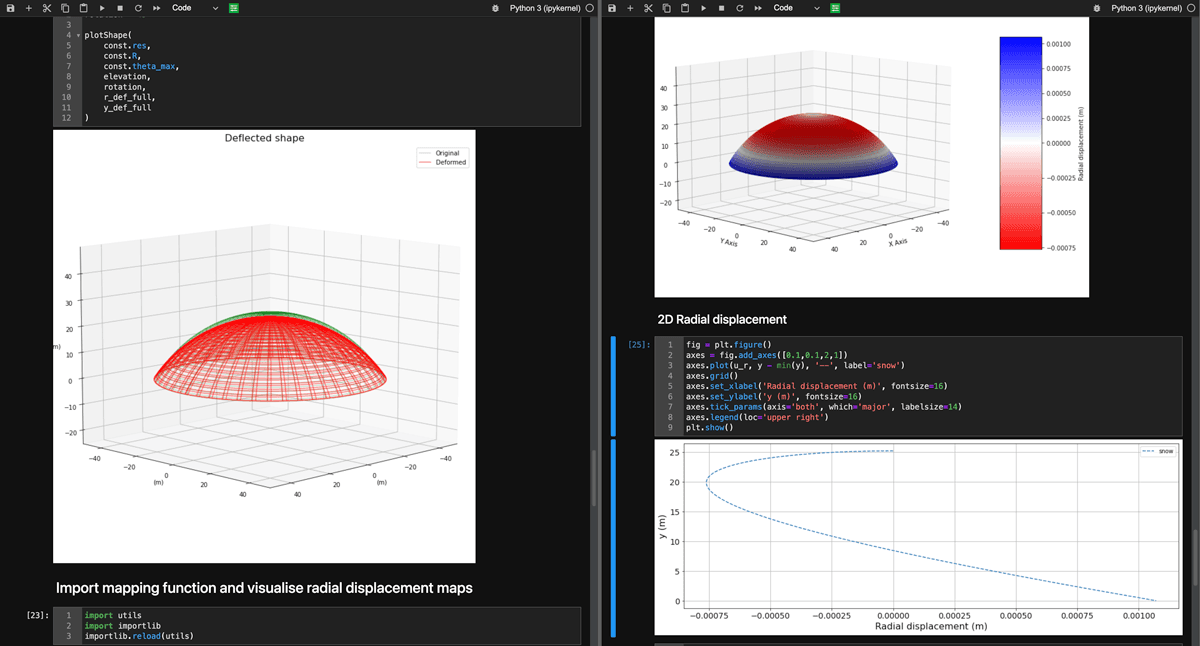
Spherical domes will serve as an excellent case study structure and test-bed for us to get comfortable with our new toolbox of equations and the associated analysis techniques.
By the end of this section, you should see that, regardless of the specific structure or loading, the analysis process follows the same repeatable pattern or sequence of steps. This is your roadmap for independently tackling analytical shell analyses.
Section 4 - Liquid Retaining Shells
Shells often don’t just resist their own self-weight, they can also be used to retain liquids. Large-scale water towers are a typical example! Liquid retaining structures have to resist internal hydrostatic pressure and perhaps even overpressure due to retained gasses if they’re sealed from the atmosphere.
In this section, we’ll consider this load case in detail by evaluating the membrane forces in a spherical tank. Although we’ll limit our exploration to spherical tanks - you can take what you learn in this section and apply it to any of the other shell geometries we explore in this course.
Section 5 - Zero & Negative Gaussian Curvature Shells
So far, we’ve discussed spherical shells and applied the fundamental equations derived in section 2 to this specific geometry. This has given us a good grasp of shell analysis workflows.
In this section, we expand and apply what we’ve learned to new geometries - shells with zero and negative Gaussian curvature. We kick things off by focusing on shells with zero Gaussian curvature, i.e. conical and cylindrical shells.
Then, in the second half of the section, we consider negative Gaussian curvature. By far, the most prevalent example of a shell of revolution with negative Gaussian curvature is the Hyperboloid—we know this as the classic cooling tower!
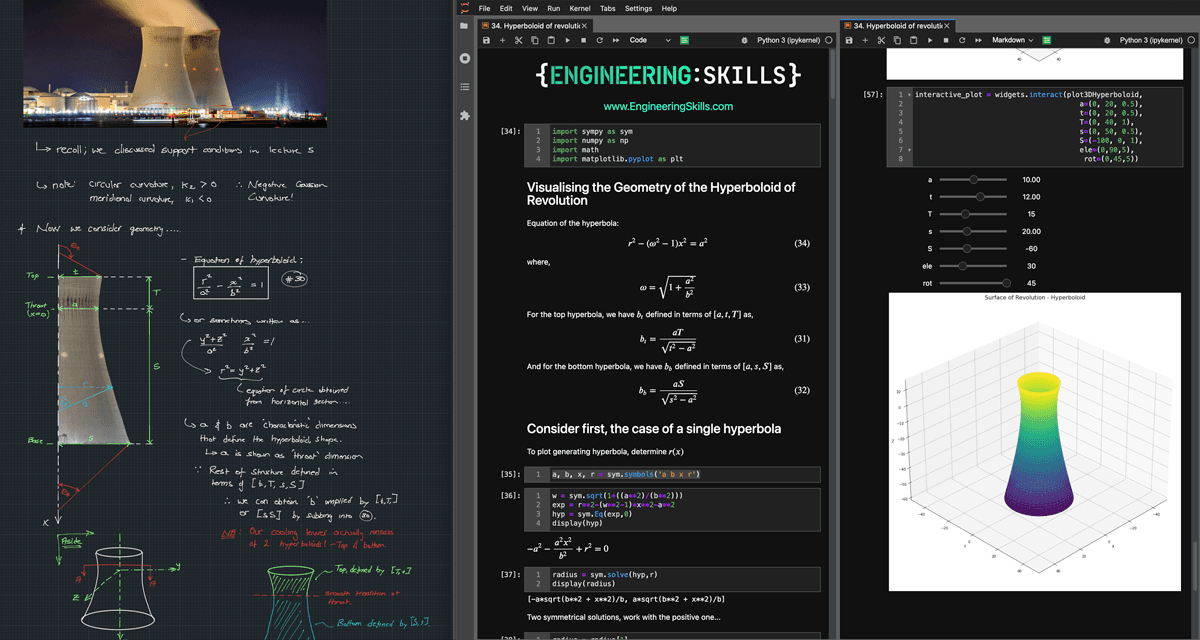
Once you’ve finished this section, you’ll have massively expanded the shell geometries you’re comfortable working with.
Section 6 - Compound / Multi-Shell Structures
In the final section of course, we take everything we’ve learned in the previous sections and mash it together, literally! We start to combine shell geometries to produce compound or multi-shell structures. By combining, spherical, conical and cylindrical forms we can vastly increase the range of shell structures we can analyse with membrane theory.

The analysis of these compound structures flows directly from what we’ve already covered in the previous five sections of the course. To determine the distribution of membrane forces, we can simply break up the structure into its constituent parts, making sure to transfer the meridional force at the boundary, from one geometry into the next. Once you’ve completed this section, you’ll have greatly increased the range of shell structures you’ll be comfortable analysing.
Who this course is for
- Anyone who has completed part one on 2D plate analysis and wants to see how the story develops for shells.
- Students and practising civil and structural engineers who want to develop a first principles understanding of membrane shell behaviour.
- Engineers who use finite element methods and want to better understand shell behaviour to inform their numerical modelling.
- Anyone who wants to explore how Python can be used to perform symbolic mathematical operations, eliminating the need to carry out complex procedural operations by hand using memory of ‘the rules’.

Download your personalised Certificate of Completion once you’ve finished all course lectures.
Applying for jobs? Use your Certificate of Completion to show prospective employers what you’ve been doing to improve your capabilities.
Independently completing an online course is an achievement. Let people know about it by posting your Certificate of Completion on your Linkedin profile or workplace CPD portfolio.
The Analytical Modelling of Plates and Shells Course Bundle
Unlock the behaviour of plates and shells and build strategies for tackling math-heavy analyses.
- Analytical Modelling of Plate and Shell Structures: Part 1 - Plates
- Analytical Modelling of Plate and Shell Structures: Part 2 - Shells

